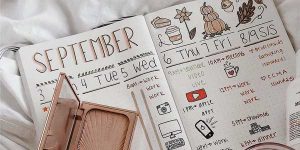After you have created the Index and Future Log, the actual planning in the Bullet Journal starts with the monthly overviews.
Monthly Overview in a Bullet Journal
On your next free page, start with your monthly outline. Just write down all days from top to bottom at the edge of the page and divide them into weeks.
In the lines with the days, you write directly the dates and events you already know. You can supplement everything else as they turn up. Therefore, you can plan ahead every month.
Also, you can enter the events and dates from the Future Log for the current month. You can also integrate your habit and other trackers into the monthly overview.

Personalizing the Monthly Log
Based on the Future Log, we always break dates down by time. In the Future Log, you plan several months in advance. The monthly overview (as the name suggests) is intended for one month.
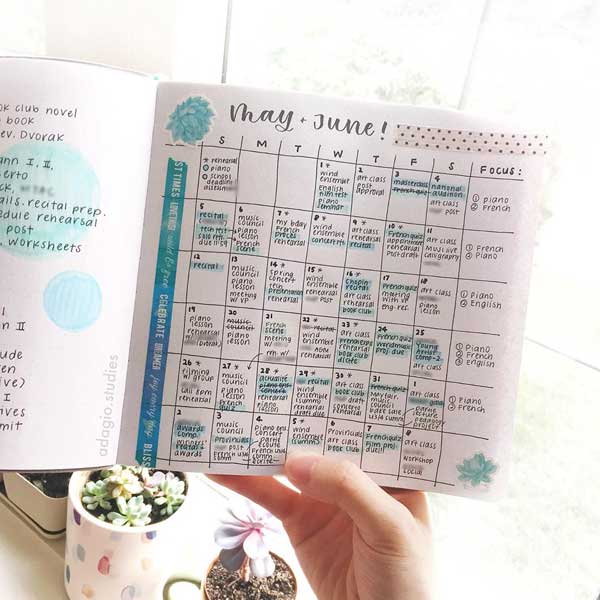
The Monthly Log is, therefore, an overview in which you can go into more detail about plans, events, and goals. As always in Bullet Journaling, everyone can design these pages according to their individual requirements.

The original Bullet Journal System has a double page for this. You may draw a calendar overview on the left side and on the right create space for the ‘to do’ list, reminders, or notes.

On the left side, you list all days and enter your dates. You can also keep a retrospective record of events you would like to remember. If you already know that you have an essential task to do on a particular day, you can also enter it here.

Important: The entries here should be as short as possible so you can only get a quick overview.
On the right side, you create a list with all your tasks, which you need to complete in the current month and which do not have a fixed day yet. You can also list tasks you have not ticked off in the last month.
Bullet Journal Monthly Setup
Cover Page
To separate the months from each other, most people create a cover page before starting a new month. Large drawings, such as wreaths of flowers and/or large typography, are often used to welcome the new month.

New covers are thematically inspired according to month and season. You can practice hand lettering, even if you’re not a big calligrapher! On Pinterest, you will also find many inspirations for this, and with time, it works better and better without a template.
Spreads or Layouts
We give each day of the week an equal amount of space to write its dates and events. You may switch to a weekly or daily layout if you have more tasks and events to note or if you want to add more details so that you do not fall short on space.

Bullet Journal Trackers
We use trackers to monitor habits and goals, such as water to drink daily, spending money or sports activities. With curve diagrams or markers, you can see at a glance the success in the respective area.
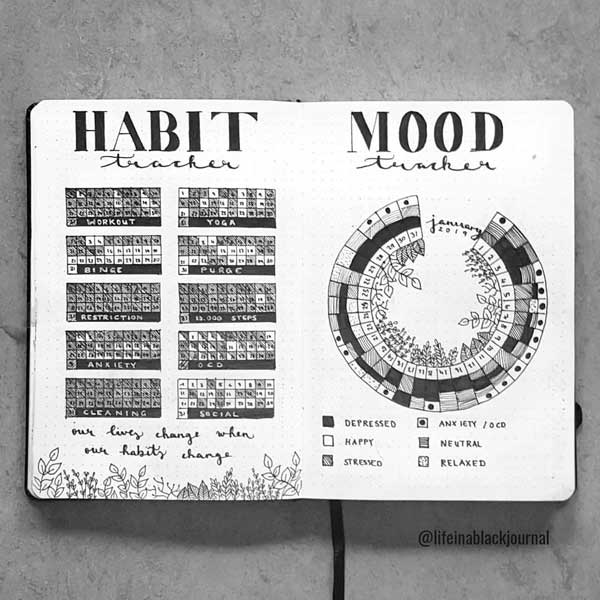
Habit Tracker
With the Habit Tracker, you can visualize how many times a month, you do certain things and track any actions you want to fulfill every day. Reading, learning, studying, sports, workout and tidying up are just some possibilities.
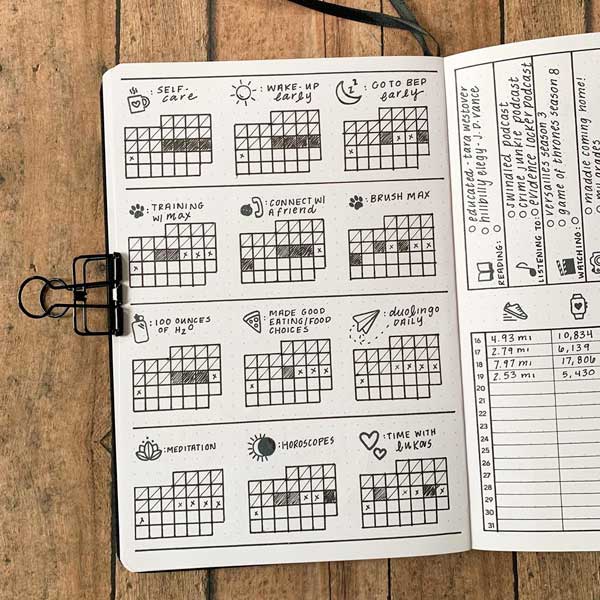
This can have the following advantages:
- Practice new habits
- Check existing habits
- Set realistic goals for certain habits
- Delete unrealistic goals
At the end of the month, you’ll see how many times you’ve actually done the things – lying to yourself won’t work anymore!

Gratitude Tracker
The Gratitude Tracker is a page where you write something down each day for which you are grateful.
It is scientifically proven that gratitude leads to more satisfaction and well being. People who regularly practice gratitude feel more alive, sleep better and are friendlier and more sensitive. The Gratitude Log reminds me to practice gratitude every day. It also gives an excellent retrospective for days when you’re not in such a good mood.

More Tracker Ideas
Besides the examples mentioned, you can plan and/or note many other things every month.
A few examples:
- Food planning/purchase planning – often more useful weekly
- Finances, monthly expenses, and income, fixed costs, invoices
- Read books, magazines, articles
- Memories, Monthly Highlights


Memories
It’s great to have the best memories of a month in the journal besides duties and tasks, so I always scribble small doodles with dates on one page. Again, you don’t have to draw well because you can keep the memories simple. Start with simple pictures and get inspired on the Internet. For example, just search for Doodles on Pinterest!

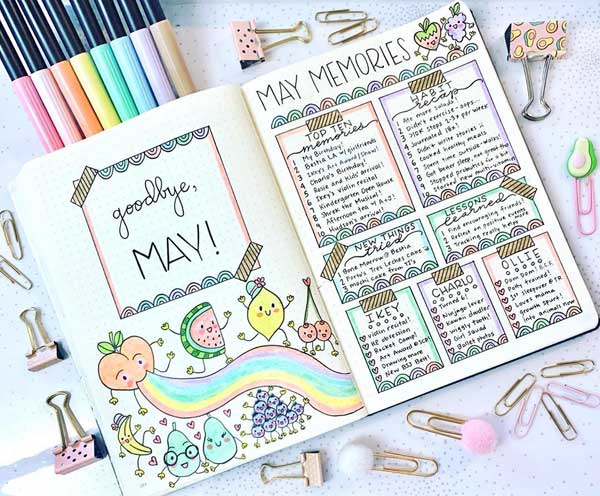
Daily Logs
In the week’s course, you can make additional daily to-do lists, the so-called dailies. This makes sense, especially when there is a lot to do and, like every element in the Bullet Journal, you use it only when you really need it.

Besides, there are countless other ways to use your Bullet Journal. Yearly plans, gratitude pages, note pages, weather doodles, travel planners, collections or reminders are just a few.







